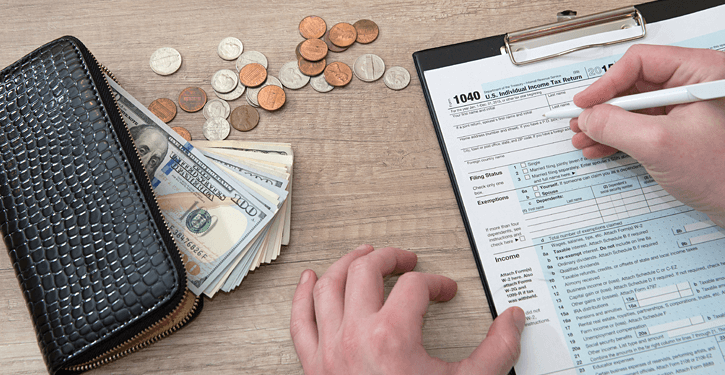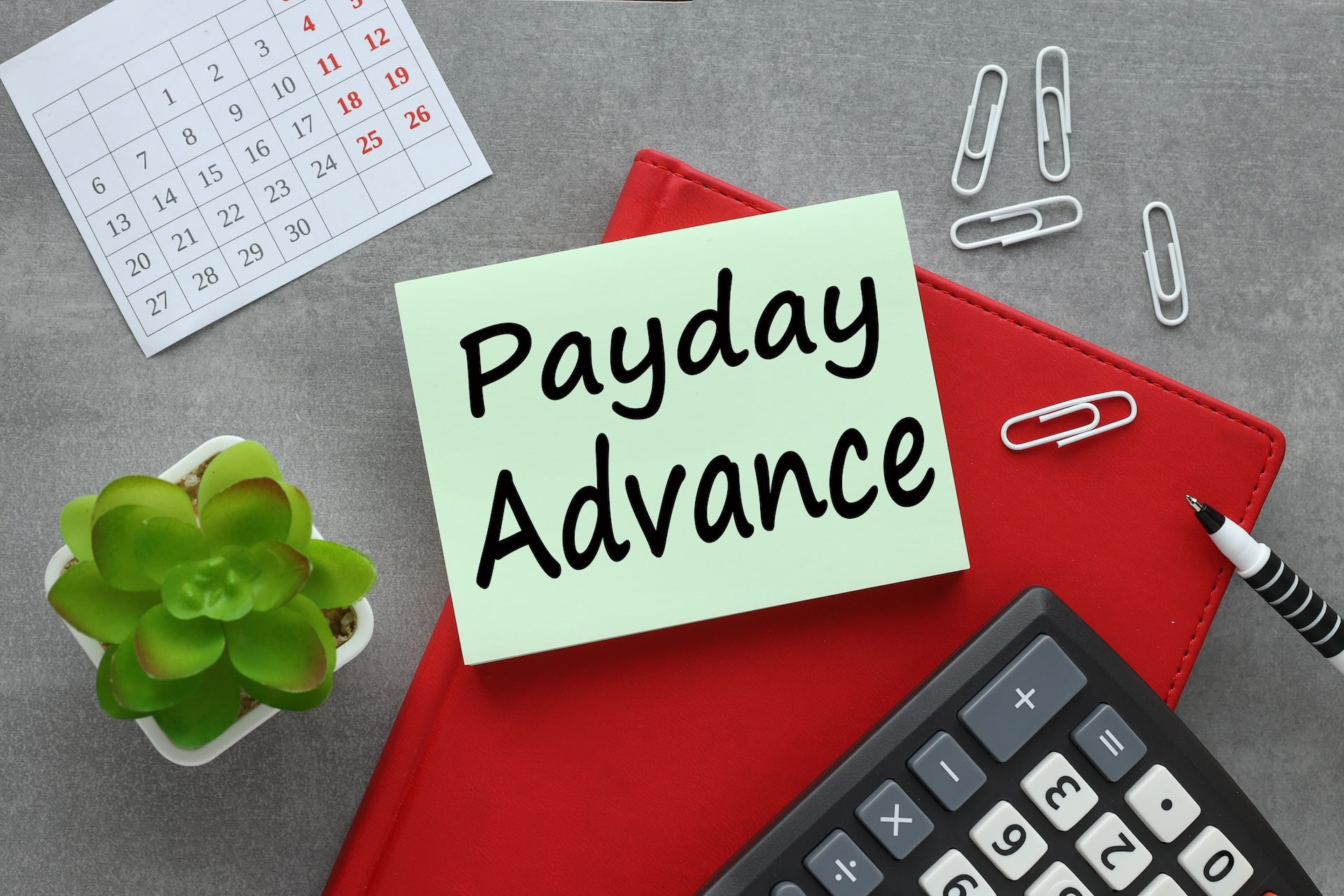Tax season is underway and if it’s your first time filing, don’t panic. Taxes don’t have to be intimidating. Just take a little time to understanding the basics. If you’re not sure where to get started, this guide breaks down the basics from start to finish. Dive in to learn more.
Getting Ready to File
Before you can begin crunching the numbers on your return, get organized, starting with your income statements.
If you’re working a regular 9 to 5 gig, your employer should have already issued you a W-2 form. If you’ve got more than one job, you’ll get a W-2 from each employer. By law, these should have been mailed out by the end of January so if you haven’t gotten yours yet, you may need to call up your company’s payroll department.
If you’ve got a side hustle on top of your day job or you work full-time as an independent contractor, you’ll also need to round up your 1099 forms. For example, if you’re a freelancer, you own an Etsy shop or you drive an Uber car on the weekends, that income is reported on a 1099.
Other types of income that show up various types of 1099 forms include:
- Interest income from a savings account
- Dividend income from investments
- Unemployment income
- Cancellation of debt
- Distributions from a qualified retirement account (including if you changed jobs and your 401(k) funds were released to you)
Depending on how old you are and whether you have any savings or investments, you may or may not have these kinds of income to report. The important thing to remember is that you are obligated to report all of your income. The IRS receives a copy of any W-2s or 1099s you receive, so if you fail to report part of your income, Uncle Sam is going to notice. Make sure you’ve got all your income statements together before you sit down to work on your return.
What’s Your Filing Status?

Once you’ve got your paperwork in order, the next step is to decide which filing status to choose. The IRS offers five options, tied to your marital status and whether you have any dependents:
- Single
- Head of household
- Married filing jointly
- Married filing separately
- Qualifying widower
If you’re not married and you don’t have kids, then filing single is the obvious choice. If you have a dependent, however, you may be able to claim head of household. Head of household comes with a higher standard deduction. This is a set amount of money you can deduct from your taxable income right off the top, before you deduct any other expenses.
A dependent is someone who lives with you and relies on you for financial support. That could be a child, a sibling, a parent or another relative. If you’re not married and you have a dependent that lives with you full-time and you provide more than half the financial support for your household, then head of household status may apply.
If you’re newly married, you’ll have to decide whether to file a joint return together or file separately. Filing a joint return generally offers more of a tax break for couples but that’s not always the case. Some married couples pay more in taxes together than they would alone. That’s called a marriage penalty, and you may or may not be able to avoid it. The IRS offers a free online tool that walks you through choosing which filing status is going to work best.
Exemptions Explained

A personal exemption is specific amount of money you get to deduct from your income for yourself and any dependents you claim on your taxes. For 2017, the exemption is $4,050 per person.
Keep in mind that you may not get to claim the exemption for yourself if someone else claims you as a dependent. For example, if your parents provided you with more than half of your financial support last year because you were still in school and you didn’t turn 24 before the year ended, they can claim you as a dependent.
You can still file your own tax return, and you can still take the standard deduction (or itemized deductions) if you were working during that time but you don’t get the exemption. Knowing whether you can take your own exemption is important because it influences how much you’ll owe in taxes.
If you use tax software to prepare your return, including the Free File software from the IRS, you will be asked if someone else can claim you as a dependent, and if you answer yes, you will not get the personal exemption.
Adding Up Deductions and Credits
Tallying up your income is just one part of the tax puzzle. You also need to account for your deductible expenses, as well as any tax credits you qualify for. A deduction lowers the amount of income you pay taxes on. A credit reduces your tax bill on a dollar-for-dollar basis.
Standard deduction vs. itemized deductions
As mentioned earlier, all taxpayers can claim the standard deduction allowed for their filing status. For 2017, for example, the standard deduction for single filers is $6,350. You also have the option of itemizing. Itemizing means you list out your deductions individually. It is to your advantage to itemize your deductions if the sum will be greater than $6,350 (or whatever the deduction is for the year you’re filing).
Itemized deductions are listed on Schedule A. Some of the expenses you can itemize on Schedule A are:
- Medical and dental expenses
- Taxes you paid
- Job search expenses
- Charitable donations
- Mortgage loan interest if you own a home
- Unreimbursed job expenses
A third category of expenses can be deducted as an adjustment to income. These are expenses that are written off before you take the standard deduction or itemize. They include:
- Student loan interest
- Moving expenses to start a new job
- Educator expenses if you’re a teacher
- Tuition and fee payments
- Contributions to a Health Savings Account
- Contributions to a traditional IRA
- Contributions to a SIMPLE or SEP plan, or a solo 401(k) if you’re self-employed
- Health insurance premiums if you’re self-employed
The key to claiming any of these deductions is to make sure you’ve got appropriate records. If you have student loan debt and you’ve been making payments on your loans, for example, your lender should issue you a 1098-E, showing what you paid in interest for the year. If you’re still in school or you just graduated, you’ll get a 1098-T, showing your total tuition and fees paid.
For the other deductible expenses listed, you’ll need to have your own records. For example, if you made a charitable donation you need a receipt showing what was donated, its value, the date and the identity of the qualified organization that received the donation. The IRS does not want your receipts with your tax return but you’ll need them in case you are audited in the future. If you can’t prove every item on your return you could owe penalties and additional taxes.
Calculating tax credits
Credits reduce the amount of tax you owe.
Some of the most common credits include:
- Earned Income Tax Credit – This credit is designed for low- and moderate-income workers.
- Child Tax Credit – Designed for taxpayers who have children.
- Child and Dependent Care Credit – This one’s meant to help offset some of the cost of paying for child or dependent care.
- American Opportunity and Lifetime Learning Credits – You may be eligible for these credits if you paid for some of your higher education costs out of pocket.
- Retirement Saver’s Credit – This credit is available to lower and middle-income earners who make contributions to a qualified retirement plan.
If you’re fresh out of school and you’re not making a ton of money yet, you may qualify for the Earned Income Tax Credit, as well as the Saver’s Credit if you’re chipping into a retirement plan. One thing to keep in mind is that when it comes higher education, you can’t double dip on deductions and credits. If you’ve got tuition and fee expenses, you can take a deduction or a credit for them but not both.
DIY or Hire a Pro?

One of the most important questions to ask yourself when you’re gearing up to do your taxes for the first time is whether you’ll do it yourself or pay a pro to handle the legwork. There are advantages and disadvantages on both sides.
Doing your taxes yourself can be time-consuming and complicated if you have lots of deductions or you just don’t have a good idea of what to do. Tax filing software can take some of the guesswork out of the process but you still need to get organized and input all of the numbers. If your tax situation is relatively simple – for example, you have one or more W-2 forms and plan to take the standard deduction – you might sail through the process. Start at Free File to see if you qualify to file online for free.
If you use a tax software program, follow the instructions carefully to avoid making an error. If you come across a question you don’t understand, do the necessary research before you answer.
Hiring an accountant or a professional tax preparer frees up your time and may lower your tax liability if you hire someone who has the knowledge to maximize your deductions.
Whether to pay for professional help comes down to your comfort level.
What to Do If You Owe Taxes
If you owe taxes and you don’t pay them by the tax filing deadline, the IRS will add penalties and interest to the total. The same goes if you also owe taxes at the state level.
If you need to, the IRS will allow you to set up a payment plan called an installment agreement but you’ll still pay interest and penalties on the amount owed until your balance is paid in full.
A credit card is one option to pay your tax bill if you’re short on cash. In a Credit Sesame survey of taxpayers who planned to use credit to pay their taxes, 27% said it was because they didn’t have an emergency fund on hand to cover the bill. About 54% said they planned to pay with credit to rack up some extra rewards. Paying taxes by credit card always incurs a fee, so be sure that the amount of rewards you earn, based on the size of your tax bill, is greater than the amount of fee you pay.
A personal loan is another option to consider alongside credit cards and in installment plans. Check your free credit report with Credit Sesame before you apply to get an idea of where your credit stands before you apply.






















